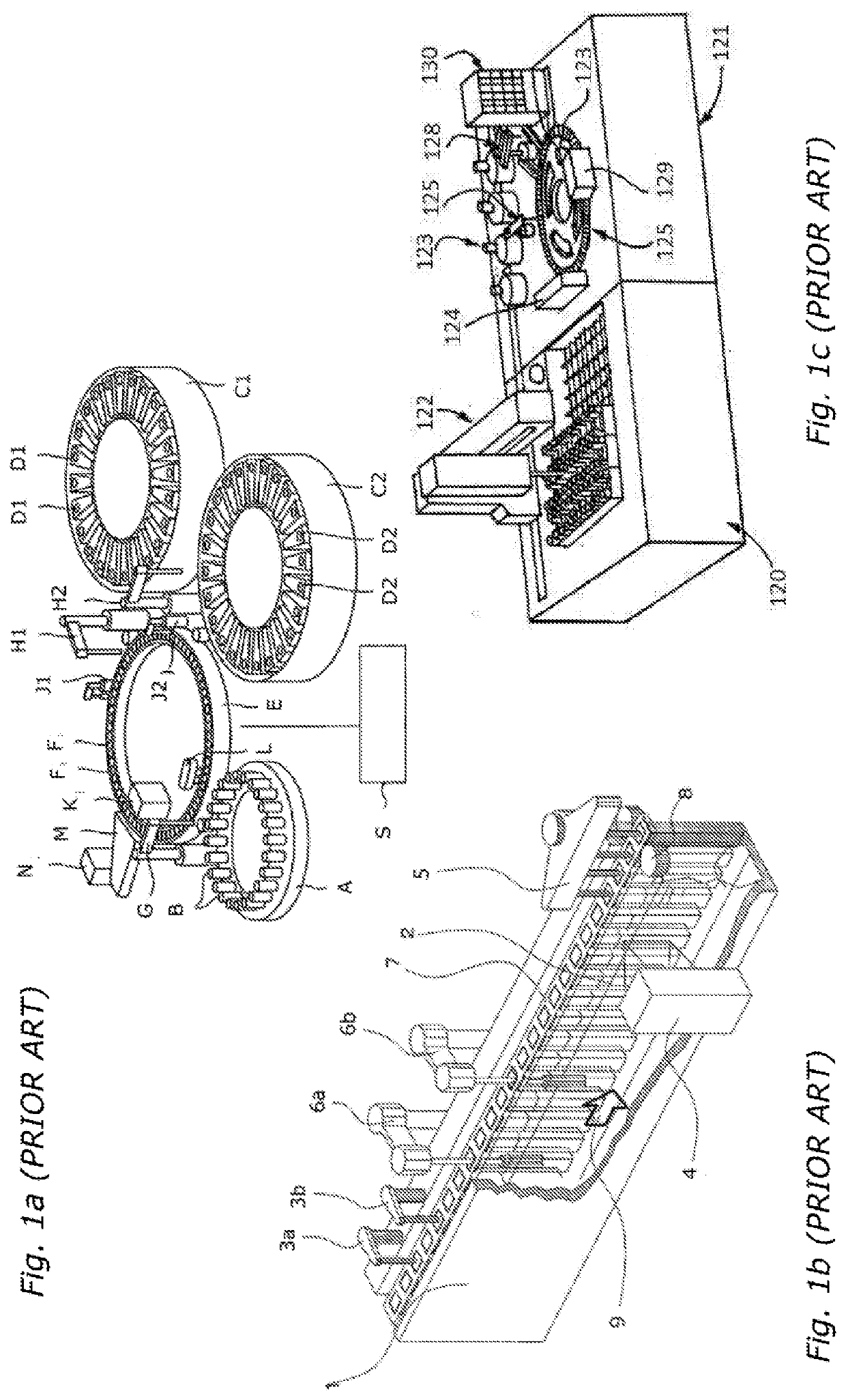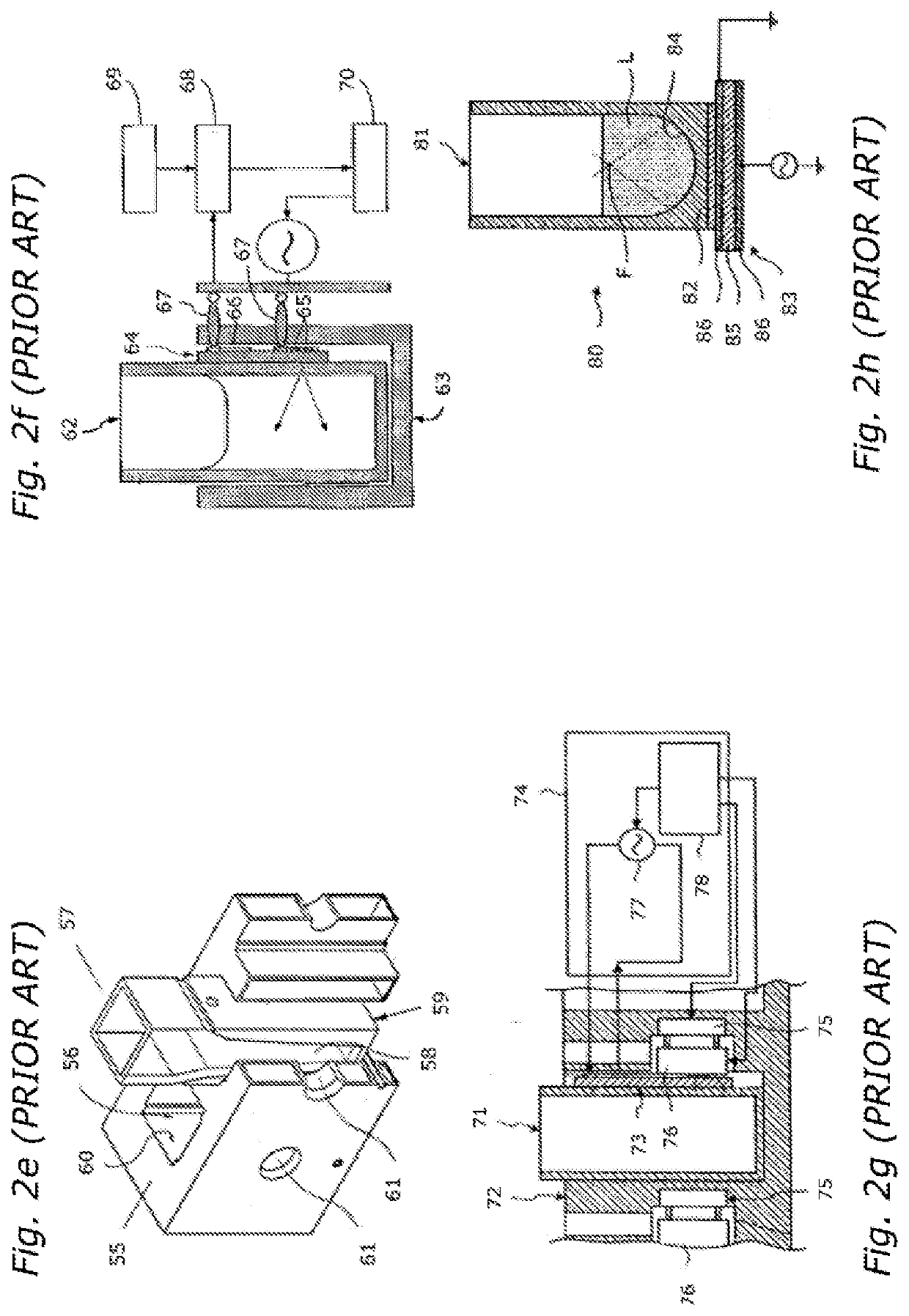The cycle times, which in this concept are rigidly predefined, are associated with a considerable loss of efficiency.
It is disadvantageous that, when measurements are complete, a
cuvette cannot be immediately washed and made available for a new test.
The rotationally organized carousel arrangement with moving samples, reagents and cuvettes, but in particular the carousel concept with movable cuvettes and stationary
machine components, results in relatively high
throughput times for the individual tests and limits the number of tests that can be carried out per hour on a device having a particular number of cuvettes.
It is disadvantageous that the disclosed configuration permits only one independently movable pipetting needle for samples and reagents, that the
reagent store is limited to the area of the inner stationary rings, and that the
optical path extends through the surface of the reaction liquid.
It is particularly disadvantageous that the measurement cuvettes cannot be washed, but instead must be replaced by the outer ring in sectors after use.
One
disadvantage of this concept is that the transport bar 7 inevitably requires, to the left and to the right of the stationary device components 3a, 3b, 6a, 6b and 5, a large amount of
free space for the linear movement of the reaction vessels 2.
The
system is inflexible, and substantially the same disadvantages as already mentioned in point A) occur.
In contrast,
whole blood is completely unsuitable for the photometric measurements of the present CC analyzer, since the blood cells scatter the light and thus the measurement results would be distorted.
Any
light scattering on particles,
turbidity, inlet faces, surfaces (for example liquid surface,
cuvette wall) leads to light losses, which on the other hand distort the measurement result.
However, an independent movement of two pipetting needles in the x- and y-direction is not provided.
However, an independent movement of the pipetting needles in the y-direction is possible only to a limited extent.
For example, it is not possible for the frame elements on the transfer arm to move past one another, which results in a mutual restriction of the freedom of movement of the pipetting needles in the y-direction.
The two pipetting needles of the first movable block can disadvantageously only be moved jointly in the horizontal x / y plane.
This has the
disadvantage that the weights of the
robotics components of the pipettor cannot be distributed across the two horizontal movement axes x and y, so that the weight of the second pipetting unit must always also be accelerated in order to move to positions in the y direction.
Furthermore, due to the joint horizontal movement, it is not possible to use both needles simultaneously for pipetting at different, non-adjacent positions of a vessel row.
One
disadvantage is the mechanical and metrological complexity associated with reaction vessels which are arranged in a circular manner on a turntable, since the individual reaction vessels 24 have to be moved into a measurement position of the
photometer 27 in order to measure the samples.
In the illustrated geometry, a
collimator lens functions optimally if the scattering surface is selected to be very small, almost punctiform, but this reduces the light output.
Disadvantageously, the
light source is of very complex construction and consists of many individual components.
In addition, the light from the LEDs located further away from the cuvette has to pass through multiple
beam splitters, which leads to intensity losses.
While the cuvette turntable then rotates only slowly, the rotor having the
light source executes a much faster rotational movement, which leads to a significant increase in the
measurement frequency.
The above-described disadvantages of turntable systems and of cuvettes attached to turntables nevertheless also exist here.
One disadvantage here is that the temperature of the sample / reagent mixture heats up only slowly to the temperature of the cuvette block.
It is thus more difficult to achieve a high sample
throughput in an analyzer, since the
temperature control when analyzing a sample always counts among the processes that take the most amount of time.
One disadvantage here is that each cuvette 62 requires an adhesively bonded
piezoelectric substrate 64 with an integrated temperature sensor 66, which must be brought into contact with an electronic regulating unit 68.
A precise
temperature control of the liquids in the cuvettes 71 by suitable parameterization alone is thus not possible or provided since a precalculated input of
ultrasound would on its own be too inaccurate to achieve a target temperature.
Compared to a block temperature control in a cuvette holder of constant temperature, a temperature control having the aforementioned technical features has the disadvantage that the
system can be regarded as not inherently safe with regard to exceeding the target temperature during the heating and regulation.
One disadvantage is the considerable mechanical complexity associated with transferring the cuvettes between the receptacles of the cuvette carousel 123 and the individual stations of the analyzer.
One disadvantage of the known measurement arrangement is the need to have to convey the liquid samples, during the analysis process, to different
machine components which are distributed in a stationary manner on a process path.
 Login to View More
Login to View More 


